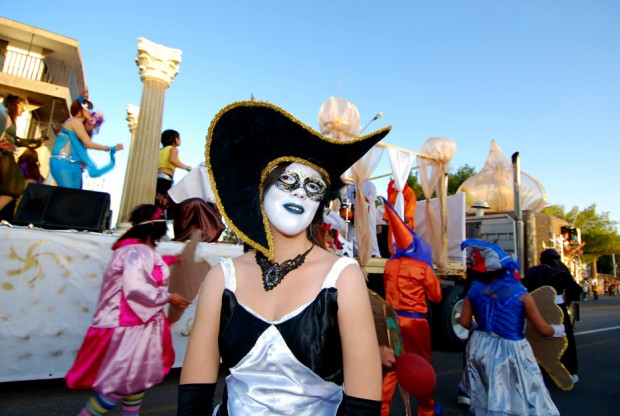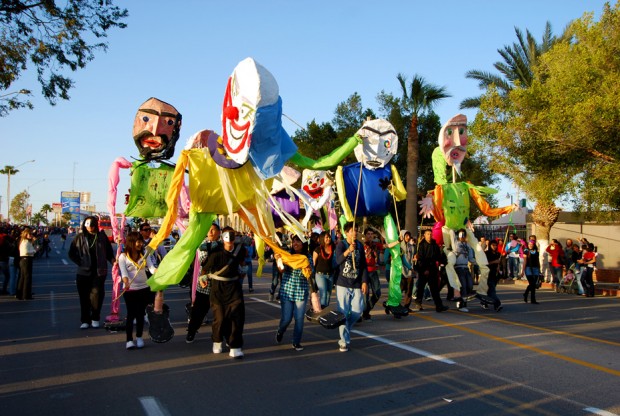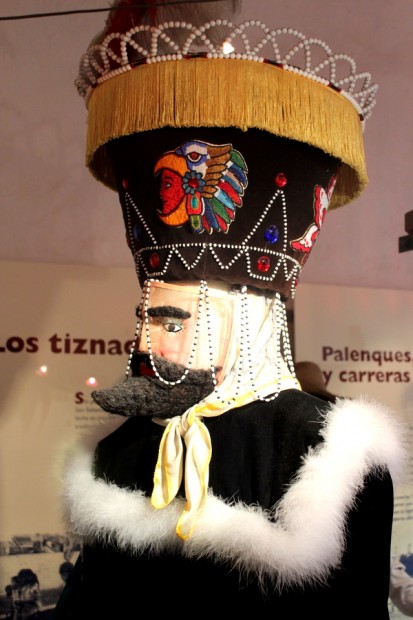
By MoKa Hammeken
February is a month filled with festivities. From the moment it starts there’s one celebration after another, yet definitely the most anticipated one (despite the lovers and desire for flowers, chocolate and other signs of affection) is Carnaval and its pernicious pleasures. Lights, colors, crowds, parade floats and fiesta, mucha fiesta!
In many parts of the world, Carnaval is celebrated around mid-February. Here in Mexico, things are coordinated in such a way that one could jump from Carnaval to Carnaval all the way up to the beginning of Lent.
Nevertheless, the question that comes to mind is “Where does Carnaval come from, or what is Carnaval?” Basically, according to some experts, Carnaval is a simple way to say “festival of the flesh” (think carne). The word carnevale comes from the ancient carnelevare “farewell to the flesh”, which is the name of the period of three to five days that, for Catholics, precede the beginning of Lent (According to the Royal Spanish Academy RAE).
According to historians, origins of this unfettered celebration stem from Sumeria and Egypt more than 5,000 years ago, and are similar to those linked to fertility and sexuality during the time of the Roman Empire. The fiestas, in honor of Bacchus (bacchanal) or the Lupercalia at the foot of the Palatine Hill in Rome, then spread the custom across Europe and were brought to the Americas by the Spanish conquistadores and the Portuguese during the 15th century. This is when the fiestas were refined and began to point to the Christian idea of physically and psychologically preparing for the beginning of Lent. Yet, this does not mean that here in the Americas the indigenous populations didn’t have similar celebrations associated with agricultural cycles, which is why it was easy to adopt and synchronize the traditional with the European influence.

As can be seen, the beginning of Carnaval had little to do with Catholicism, but as history progressed, and taking into account that said religion has been one of the most influential on the Western world, it mixed and become one, lending it – depending on the region – different meanings and customs.
For example, the “burning of ill spirits” originates from the Carnaval of Veracruz (and is also done in Campeche, Mérida, and Mazatlán (among other places) and is a public event done during the first night of Carnaval (in Puerto Peñasco it’s scheduled for Friday evening 2/17 at the esplanade near Peñasco del Sol hotel). This is generally a representation of an unpopular local or international figure or event; it (the figure) is put on trial and burned (burning the ill spirits) while the sky is lit up with multicolors.
 Another popular element of carnaval in Mexico are the famous Chinelos (there was a group dancing at the local Taste of Peñasco just last Saturday). These originally come from the small mountain village of Tlayacapan in the central Mexican state of Morelos, yet bit by bit they spread throughout Morelos as well as into the neighboring state of Puebla, to the south of Mexico City and into Mexico State. Still, it is in the small town of Tepoztlán (Morelos) where the chinelos dominate with fervor and where they are most commonly found. Their joyful dance of jumping (basically the same since the 19th century) has now extended throughout the country and into the remotest areas of Mexico (and even here in Rocky Point).
Another popular element of carnaval in Mexico are the famous Chinelos (there was a group dancing at the local Taste of Peñasco just last Saturday). These originally come from the small mountain village of Tlayacapan in the central Mexican state of Morelos, yet bit by bit they spread throughout Morelos as well as into the neighboring state of Puebla, to the south of Mexico City and into Mexico State. Still, it is in the small town of Tepoztlán (Morelos) where the chinelos dominate with fervor and where they are most commonly found. Their joyful dance of jumping (basically the same since the 19th century) has now extended throughout the country and into the remotest areas of Mexico (and even here in Rocky Point).
Among the Fireworks, spirited and hypnotic dances, masks, and strident colors, during Carnaval people seem to let themselves go for a while, making Carnaval one of the most anticipated spectacles during this season wherever one may be.
